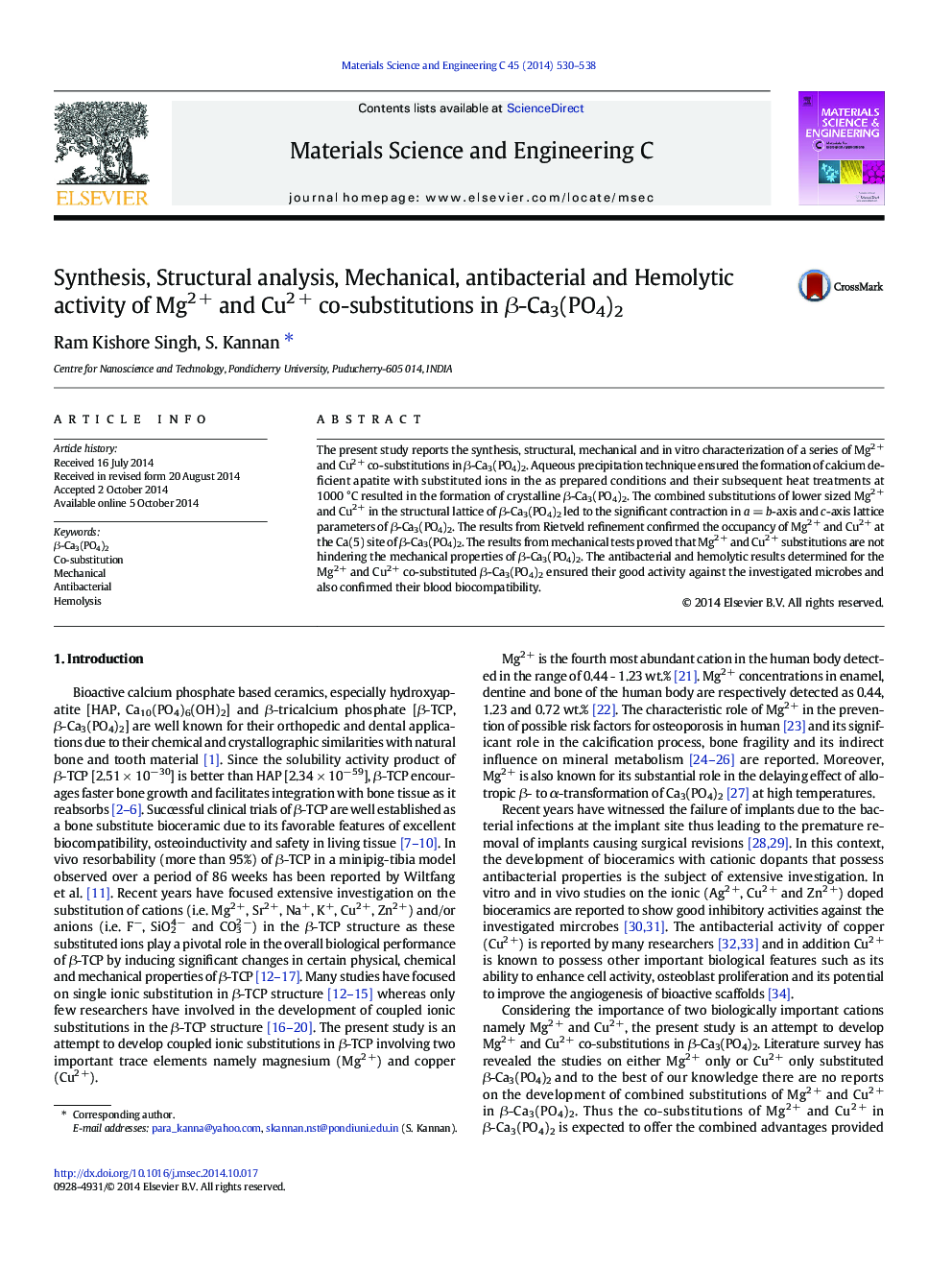| Article ID | Journal | Published Year | Pages | File Type |
|---|---|---|---|---|
| 1428588 | Materials Science and Engineering: C | 2014 | 9 Pages |
•Mg2 + and Cu2 + co-substitutions in β-Ca3(PO4)2 were obtained through aqueous precipitation technique.•Co-substitutions of Mg2 + and Cu2 + led to the significant reduction in the lattice parameters of β-Ca3(PO4)2.•Mechanical properties of β-Ca3(PO4)2 were found stable even after the substitutions of Mg2 + and Cu2 + at its crystal lattice.•In vitro tests ensured better antibacterial behavior and good hemolytic activity of Mg2 + and Cu2 + co-substituted β-Ca3(PO4)2.
The present study reports the synthesis, structural, mechanical and in vitro characterization of a series of Mg2 + and Cu2 + co-substitutions in β-Ca3(PO4)2. Aqueous precipitation technique ensured the formation of calcium deficient apatite with substituted ions in the as prepared conditions and their subsequent heat treatments at 1000 °C resulted in the formation of crystalline β-Ca3(PO4)2. The combined substitutions of lower sized Mg2 + and Cu2 + in the structural lattice of β-Ca3(PO4)2 led to the significant contraction in a = b-axis and c-axis lattice parameters of β-Ca3(PO4)2. The results from Rietveld refinement confirmed the occupancy of Mg2 + and Cu2 + at the Ca(5) site of β-Ca3(PO4)2. The results from mechanical tests proved that Mg2 + and Cu2 + substitutions are not hindering the mechanical properties of β-Ca3(PO4)2. The antibacterial and hemolytic results determined for the Mg2 + and Cu2 + co-substituted β-Ca3(PO4)2 ensured their good activity against the investigated microbes and also confirmed their blood biocompatibility.
